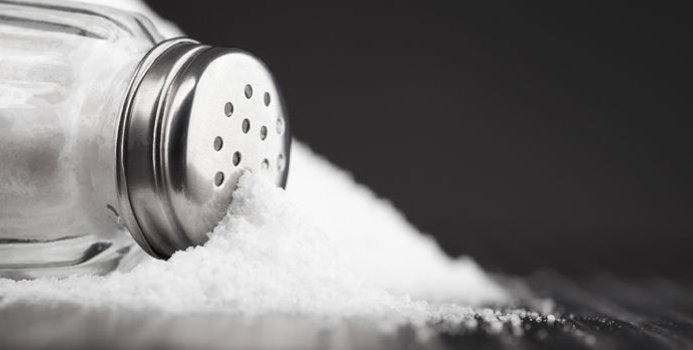Salt is a taste that many of us have come to love and enjoy on a day to day basis. In fact, our sodium intakes continue to climb as more and more fast and processed foods are introduced to the market each and every day.
Sadly, this isn't doing our health any favors. High salt intakes are associated with conditions such as heart disease, stroke, high blood pressure, osteoporosis as well as diabetic complications.
Clearly, salt is something that should be cut out. But how? What’s the best way to manage your salt intake?
Here are a few things that you should know.
Evaluate The Processed Foods You’re Eating
First, consider all the processed foods that you’re eating. This is a place where salt likes to lurk and many people don’t even realize it. For instance, take those crackers you snack on mid-morning. Did you know that there are a couple hundred milligrams of sodium in many varieties?
Or the peanut butter you smear over a slice of toast. It too can be loaded with sodium.
Yogurts are another place where sodium likes to lurk. You can find sodium virtually everywhere. Start reading labels. It’s the only way you’ll ever come to terms with exactly how much you’re eating.
Avoid Canned Foods At All Costs
Next, try and avoid canned foods at all costs. Canned foods are notorious for being rich in sodium and most aren’t even that healthy either. Unless it’s canned vegetables you’re eating and you are making sure to rinse the vegetables thoroughly with water before serving, you’re taking in far too much sodium.
Try and avoid this at all costs. Canned tomato products, canned pasta dishes, and canned soups are the worst offenders.
Load Up On Fresh Produce
One thing you can do that has nothing to do with lowering your sodium intake but everything to do with helping you better manage it is loading up on fresh produce. This does two things. First, fresh fruits and vegetables are nearly sodium free, so by filling up on these foods, you’ll consume fewer of the high sodium foods you otherwise would be eating.
Second, by eating these foods, you increase your potassium intake. Potassium and sodium work in opposition to each other, so to speak, so the higher your potassium intake is, the higher your corresponding sodium intake can also be.
By increasing your potassium intake, you may be able to offset some of the negative effects of sodium. This said, don’t take this too far. It does not mean you can eat all the sodium you want as long as you are also taking in high amounts of potassium. It’s simply a way to minimize the damage that may already be there.
Be Smart With Beverages
Finally, be smart with your beverages as well. Most people would not think of beverages as a place where salt lurks, but don’t be fooled. Many of the drinks you’re serving could be rich in salt and unless you check the nutritional stats, you’ll never know better.
Water is the best thing to eat and water also helps the body rid excess salt to bring you back to better balance as well.
So there you have a few tips on how to cut back on your salt intake. Being aware and informed possibly the most important thing that you could do.
[Image via Shutterstock]



